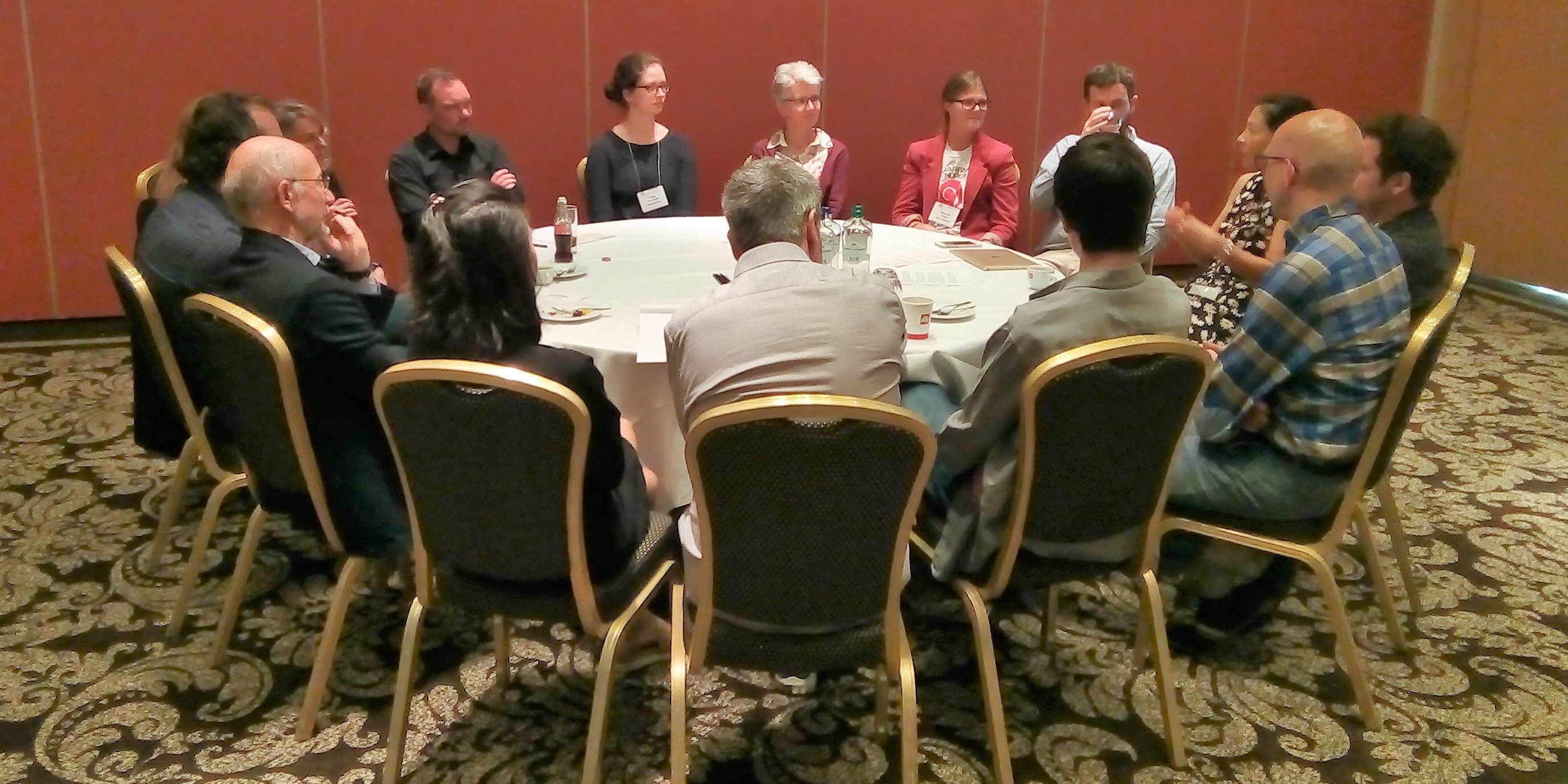Text by Lauriane Janssen
First European Patient Day in Amsterdam
The first European patient day was held in Amsterdam after the International Research Symposium we talked about in the previous MEN news flash. This patient day attracted mainly patients from The Netherlands and from Belgium/Flanders, but also some from further away such as UK, Ireland, Switzerland, Denmark, Finland and even… New-Zeeland ! This cultural mix led to extremely rich exchanges both on disease level and personal level.
In the morning, we heard several presentations by “big names” in the Marfan world, which were very well adapted to the patient level of understanding. First Dr. Dianna Milewicz from Houston, TX, US discussed genetic causes of thoracic aortic aneurysms. One of the main take home messages from her talk was that Marfan patients should avoid doing isometric exercises, which can be understood as avoiding all the exercises where you would do a “grumping” noise when doing is, such as weight lifting.
The next talk was by Dr. Denver Sallee from Atlanta, GA, US about cardiac treatment in children. He explained us, among other, the origin of the Z score, and why this Z>2 was considered as a limit based on statistical analysis of the general population.
Dr. Ronald A. Lacro from Boston, MA, US, came to talk about physical guidelines in Marfan Syndrome. He did confirm the necessity to avoid isometric exercises, and highlighted that, although too much exercise/strain is not good for Marfan patients, studies are now showing that some kind of exercise is very important for the aortic health, for example 10 000 steps a day for children.
The pregnancy aspect was discussed by Dr. Melissa Russo from Houston, TX, US. She reviewed the different methods to start a family and highlighted the necessity of talking to your doctors when you want to get pregnant, in order to evaluate if your medication is compatible with pregnancy and carefully follow your aorta during the pregnancy.
Dr. Julie De Backer from Belgium talked about the cardiological follow up of adults with Marfans. She emphasized that, nowadays, thanks to regular follow up and prophylactic surgery (before dissection) Marfan patients have a highly reduced the risk of death by aortic problems. She did also talk about the need of “some kind” of physical activity, like walking, to improve aortic health.
These presentations were followed by a lunch were doctors and patients talked together freely. This lunch time was very beneficial both from the doctors and the patients point of view.

The afternoon was divided into two sets of parallel workshops about:
- Pain management (without drugs)
- The Marfan eye
- Family planning
- Growing old with Marfan
- Improving the quality of life.
All these workshops were interactive group discussions involving a lot of laughing on all subjects. It is quite nice to see how Marfan people always find a way to interact with each other and create instant connections.
For this first patient meeting, 50 persons had registered and all that came were extremely enthusiastic about their experience. Let’s hope that next time we have even a bigger attendance!
Lauriane







